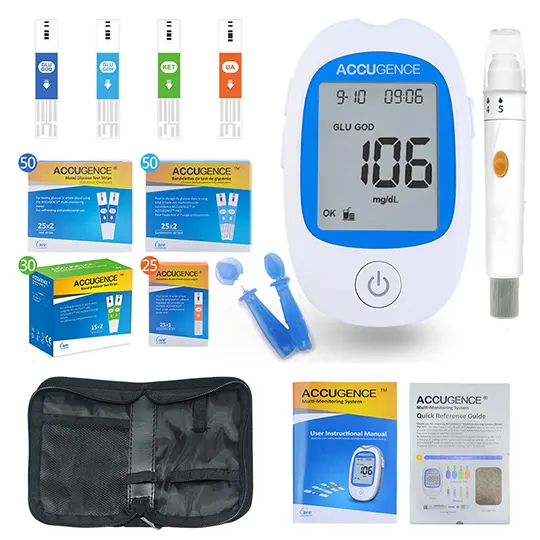codeine/guaifenesin/pseudoephedrine (Cheratussin DAC, Lortuss EX, Tricode GF, Virtussin DAC)
Classes: Antitussives, Narcotic Combos
Dosing and uses of Cheratussin DAC, Lortuss EX (codeine/guaifenesin/pseudoephedrine)
Adult dosage forms and strengths
codeine/guaifenesin/pseudoephedrine
oral liquid: Schedule V
- (8mg/200mg/30mg)/5mL (Tricode GF)
- (10mg/100mg/30mg)/5mL (Cheratussin DAC, Lortuss EX, Virtussin DAC)
Cough with Congestion
Temporary relief of nasal congestion and cough associated with respiratory tract infections and related conditions, such as sinusitis, pharyngitis, bronchitis, and asthma, when these conditions are complicated by tenacious mucus or mucus plugs and congestion
5-10 mL PO q6-8hr, up to 40 mL/24 hr
Pediatric dosage forms and strengths
codeine/guaifenesin/pseudoephedrine
oral liquid: Schedule V
- (8mg/200mg/30mg)/5mL (Tricode GF)
- (10mg/100mg/30mg)/5mL (Cheratussin DAC, Lortuss EX, Virtussin DAC)
Cough with Congestion
<6 years: Not recommended
6-12 years: 5 mL PO q6-8hr, up to 4 mg/kg pseudoephedrine or 20 mL/24 hr
>12 years: As adults; 5 mL-10 mL PO q6-8hr, up to 40 mL/24 hr
Cheratussin DAC, Lortuss EX (codeine/guaifenesin/pseudoephedrine) adverse (side) effects
>10%
Codeine
- Drowsiness
- Constipation
1-10%
Codeine
- Bradycardia, hypotension, tachycardia
- Confusion, dizziness, false feeling of well being, headache, lightheadedness, malaise, paradoxical CNS stimulation, restlessness, weakness
- Rash, urticaria
- Anorexia, nausea, vomiting, xerostomia
- LFT's increased
- Ureteral spasm, urination decreased
- Dyspnea
- Burning at injection site, blurred vision, histamine release
Frequency not defined
Codeine (serious)
- Hypotension, With IV use
- Seizure, With excessive doses
- Anaphylactoid reaction (rare)
- Respiratory depression
Guaifensesin
- Headache
- Rash
- Nausea
- Vomiting
Pseudoephedrine
- CNS (tremor, restlessness, etc)
- Insomnia
- Nausea
- Vomiting
Warnings
Contraindications
Codeine
- Absolute: acute abdominal condition, diarrhea associated with toxins, pseudomembranous colitis, respiratory depression
- Relative: asthma (acute), inflammatory bowel disease, respiratory impairment
Guaifenesin
- Self-medication in chronic or persistent coughs
- Hypersensitivity
Pseudoephedrine
- Hypsesensitivity
- Severe HTN, severe CAD
- Nonselective MAO inhibitors: risk of hypertensive reaction
- Newborns, preemies
Cautions
Codeine
- Caution in cardiac arrhythmias, drug abuse/dependence, emotional lability, gallbladder disease, head injury, hepatic impairment, hypothyroidism, increased ICP, prostatic hypertrophy, renal impairment, seizures w/ epilepsy, urethral stricture, urinary tract surgery
- Risk of life threatening side effects in nursing babies, especially if mother is an ultra rapid metabolizer of codeine
- Ibuprofen is more effective than codeine for pain from musculoskeletal injuries in children
Guaifenesin
- Often comes in combos, check brand name/other constituents
Pseudophedrine
- Mild-mod HTN, cardiac disease, hyperthyroidism, hyperglycemia, BPH, DM, glaucoma
- Many combo formulations are switching to phenylephrine due to restrictions arising from easy conversion to methamphetamine (The Combat Methamphetamine Epidemic Act of 2005 bans OTC sales of cold medicines that contain ingredients commonly used to make methamphetamine such as pseudoephedrine)
- Lactation
Pregnancy and lactation
Pregnancy category: C
Lactation: contraindicated in nursing women
Pregnancy categories
A: Generally acceptable. Controlled studies in pregnant women show no evidence of fetal risk.
B: May be acceptable. Either animal studies show no risk but human studies not available or animal studies showed minor risks and human studies done and showed no risk.
C: Use with caution if benefits outweigh risks. Animal studies show risk and human studies not available or neither animal nor human studies done.
D: Use in LIFE-THREATENING emergencies when no safer drug available. Positive evidence of human fetal risk.
X: Do not use in pregnancy. Risks involved outweigh potential benefits. Safer alternatives exist.
NA: Information not available.
Pharmacology of Cheratussin DAC, Lortuss EX (codeine/guaifenesin/pseudoephedrine)
Mechanism of action
Codeine: Narcotic agonist analgesic with antitussive activity, mu receptor agonist
Guaifenesin: Reduces viscosity of secretions by increasing amount of respiratory tract fluid
Pseudoephedrine: Alpha adrenergic agonist
Codeine
Half-Life: 3-4 hr
Onset: 30-60 min
Metabolism: Inactive but metabolized to morphine by CYP2D6 (missing in 5-10% of population)
Duration: 4-6 hr
Peak Plasma Time: 0.5-1 hr
Protein Bound: 25%
Excretion: urine (90%), feces
Guaifenesin
Half-Life: 1 hr
Onset: 30 min
Duration: 4-6 hr
Metabolism: liver
Metabolite: b-(2-methoxyphenoxy) lactic acid
Excretion: Urine
Pseudoephedrine
Half-Life: 3 hr (children); 9-16 hr (adults)
Onset: 30 min (decongestant)
Duration: 3-8 hr
Peak Plasma Time: 1.97 hr
Metabolism: Liver, by N-demethylationMetabolites: inactive
Clearance: 7.3-7.6 mL/min/kg
Excretion: Urine (43-96%)
Administration
Instructions
Give with food or milk if GI upset
Administer liquid with special measuring device for accurate dose



